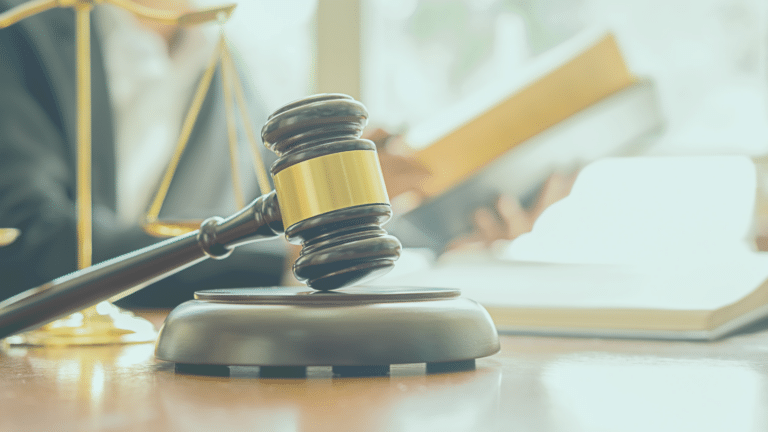The big draw of the Small Business Administration’s Paycheck Protection Program is that small-business owners can use the funds they receive to keep their businesses afloat and have their loans forgiven at the end of the loan period.
The ability to have their loans forgiven hinges on keeping staff employed and paid, incentivizing these businesses to keep people on their payroll and off unemployment.
To meet requirements for loan forgiveness, you have to be able to prove you’ve done these things, which means that tracking your business expenses during this period is of the utmost importance.
Let’s take a look at some of the information you’ll need to provide to qualify for PPP loan forgiveness, and some strategies small business owners can utilize to effectively track their spending.
The Basics Of Paycheck Protection Program Loan Forgiveness
To help small businesses pay their employees during the COVID-19 crisis, the PPP is providing forgivable loans to small businesses that employ 500 or fewer employees; however, other businesses may be eligible and you should review the PPP eligibility requirements. This includes self-employed individuals and independent contractors.
The deadline to apply for this program was June 30, 2020.
While the loan can be used for a variety of costs, borrowers need to meet certain criteria when it comes to the way they spend the funds to be eligible for forgiveness.
These are the main criteria to qualify for PPP loan forgiveness:
- Loan funds must be used to cover payroll costs, mortgage interest, rent and utilities.
- At least 60% of the loan funds must go towards payroll costs; otherwise, forgiveness amount may be reduced.
- Borrowers may not reduce their full-time employee headcount (this is calculated as full-time equivalency, or FTE, which includes part-time workers).
- Borrowers may not decrease salaries or wages by more than 25% for any employee making less than $100,000 annually.
For the purposes of this program, payroll costs include salary, wages, commissions or tips (up to $100,000 per employee); healthcare, time off and retirement benefits, separation or dismissal pay allowances; any state or local taxes on compensation.
If you cut staff, you may still receive full loan forgiveness if you hire them back. If you make a good=faith offer to rehire that is declined and are unable to find a similarly qualified employee, you may also still be eligible for loan forgiveness. Previously, this rehiring or documentation of your inability to do so had to be done by June 30, but the deadline has now been extended to December 31, 2020.
Changes To PPP Guidelines
If you’re familiar with the original PPP guidelines, you may have noticed here that the rules of the PPP have changed slightly since the program was first rolled out. The Paycheck Protection Program Flexibility Act of 2020, signed into law on June 5, 2020, made the requirements for loan forgiveness less stringent.
If you haven’t yet familiarized yourself with the new rules, be sure to read up on what’s changed to find out if any of the changes affect your eligibility.
One of the major changes made was the portion of the loan funds that were required to be spent on payroll. Prior to the PPP Flexibility Act, borrowers had to spend at least 75% of the loan funds on payroll but that has now been reduced to 60%.
Another big change: the period during which borrowers must spend the funds has been extended. The original PPP guidelines required that all the loan funds be spent within eight weeks of receiving them. PPPFA extends this period to 24 weeks or until December 31, 2020, whichever comes first.
However, those who received their loan funds before June 5 may choose to stick with their initial 8-week period.
If some or all of your loan isn’t eligible for forgiveness, the loan term has been extended from 2 to 5 years.
Because of the popularity of this program, Congress also had to allocate additional funds for PPP, as the initial $350 billion ran out in just a couple of weeks.
How To Get PPP Loan Forgiveness
You’ve met the requirements for forgiveness eligibility; how exactly do you go about getting your PPP loan forgiven?
First, you’ll need to fill out an application for forgiveness.
If you are self-employed or you didn’t reduce the number of employees you have and didn’t decrease their salaries or wages by more than 25%, you may be eligible to use the simplified, 3508 EZ form. The SBA has more detailed instructions on who is able to use this form and how to fill it out.
If you aren’t able to use the 3508 EZ form, you’ll use the standard loan forgiveness application. Detailed instructions on how to fill out this application can be found on the SBA website.
The application will require you to fill out the basics of your business and your PPP loan: your business address, the number of people you employ, your loan number and amount, and all the details on how much you spent and what you spent it on.
What You Need To Include With Your Forgiveness Application
In addition to submitting the Loan Forgiveness Application – including the Loan Forgiveness Calculation form and the Schedule A form – you’ll need to provide some documentation backing up the information you reported in your application.
To verify your payroll information, you should include:
- Bank account statements or third-party payroll service provider reports showing how much you paid your employees during the period covered by the loan.
- Tax forms that have been or will be reported for the period covered by the loan, including payroll tax filings and quarterly business and individual employee wage reporting and unemployment insurance tax filings.
To verify your number of FTE employees, you should include documentation that verifies:
- The average number of FTE employees on your payroll employed between February 15, 2019 – June 30, 2019.
- The average number of FTE employees on your payroll employed between January 1, 2020 – February 29, 2020. Seasonal employers may elect to use a more representative period of time and should provide documentation showing the number of FTE employees employed during any consecutive 12-week period between May 1, 2019 – September 15, 2019.
The documentation you use to verify your FTE employees may be the same ones used to verify payroll information.
To verify payments you made toward eligible non-payroll expenses, you should include documentation that verifies:
- Your business mortgage interest payments.
- Your business rent or lease payments.
- Your business utility payments.
Once you’ve completed your application, you’ll send it (and any required documentation) to your lender or loan servicer.
Requirements For Tracking PPP Spending
Though you won’t have to submit it with your application, you will need to hold onto your Schedule A Worksheet and any documentation you used to complete this worksheet.
Other than asking that you keep records of the documents used to complete your forgiveness application, the SBA doesn’t have any specific guidance or rules for how business owners should go about keeping track of their PPP expenses. That decision is left up to you, and likely will depend on what kind of bookkeeping programs you already utilize.
How To Best Track PPP Spending
Now that you know what documentation you’ll be required to provide to ensure your PPP loan is forgiven, you just need to figure out how best to keep track of the ways in which you utilize your loan funds.
First, it’s recommended that you keep your PPP funds in a separate bank account, so you can easily keep track of where that money is going and how much you have.
You should also be aware of how much money you have to work with for both payroll costs and non-payroll costs. At this time, only 40% of the forgiven amount can be for qualifying non-payroll expenses. That means at least 60% of your funds should be used towards payroll costs if you want to receive full loan forgiveness.
It will likely be helpful to create a plan for exactly how you’ll allocate your loan funds, and to check in regularly to make sure you’re still on track to receive forgiveness.
Obviously, you’ll need to keep tabs on how much you’re paying your employees and what other expenses you’re putting your loan funds toward. If you utilize accounting software or a payroll provider to do bookkeeping for your business, this should be fairly simple to do.
When it comes time to apply for forgiveness, having all the relevant documents, bank statements, payroll statements, tax filings, receipts and other official records will go a long way in making the process of loan forgiveness a headache-free one.
If I Qualify For Forgiveness, Will I Still Have To Pay Back Some Of The Loan?
It’s possible to be eligible only for partial PPP loan forgiveness. If this is the case, only some of your loan will be forgiven, and the rest will need to be repaid.
If you don’t qualify for full forgiveness, it’s likely because you didn’t completely meet the guidelines for full forgiveness; perhaps you spent more than 40% of the funds on non-payroll expenses or you used the money for eligible but non-forgivable costs.
For any part of your loan that isn’t forgiven, you’ll have to pay it back according to its terms. For loans issued before June 5, 2020, the loan term is two years. For loans issued after June 5, the loan term is 5 years. Either way, you’ll pay the amount you owe back at an interest rate of 1%.
Where To Find More Information On The PPP
To learn more about all the loan options available to you during this time, check out our FAQ page on COVID-19 SBA disaster loans.
For official information on the PPP, head to SBA.gov. You can also check out our complete guide to the PPP to help answer any questions you may have. If you want some general tips on keeping your business afloat during COVID-19 or information on free resources available to small businesses, we’ve got you covered there, too.
Ready to look into what your options are for COVID-19 relief? Check out Rapid Finance’s COVID-19 relief financing options.


